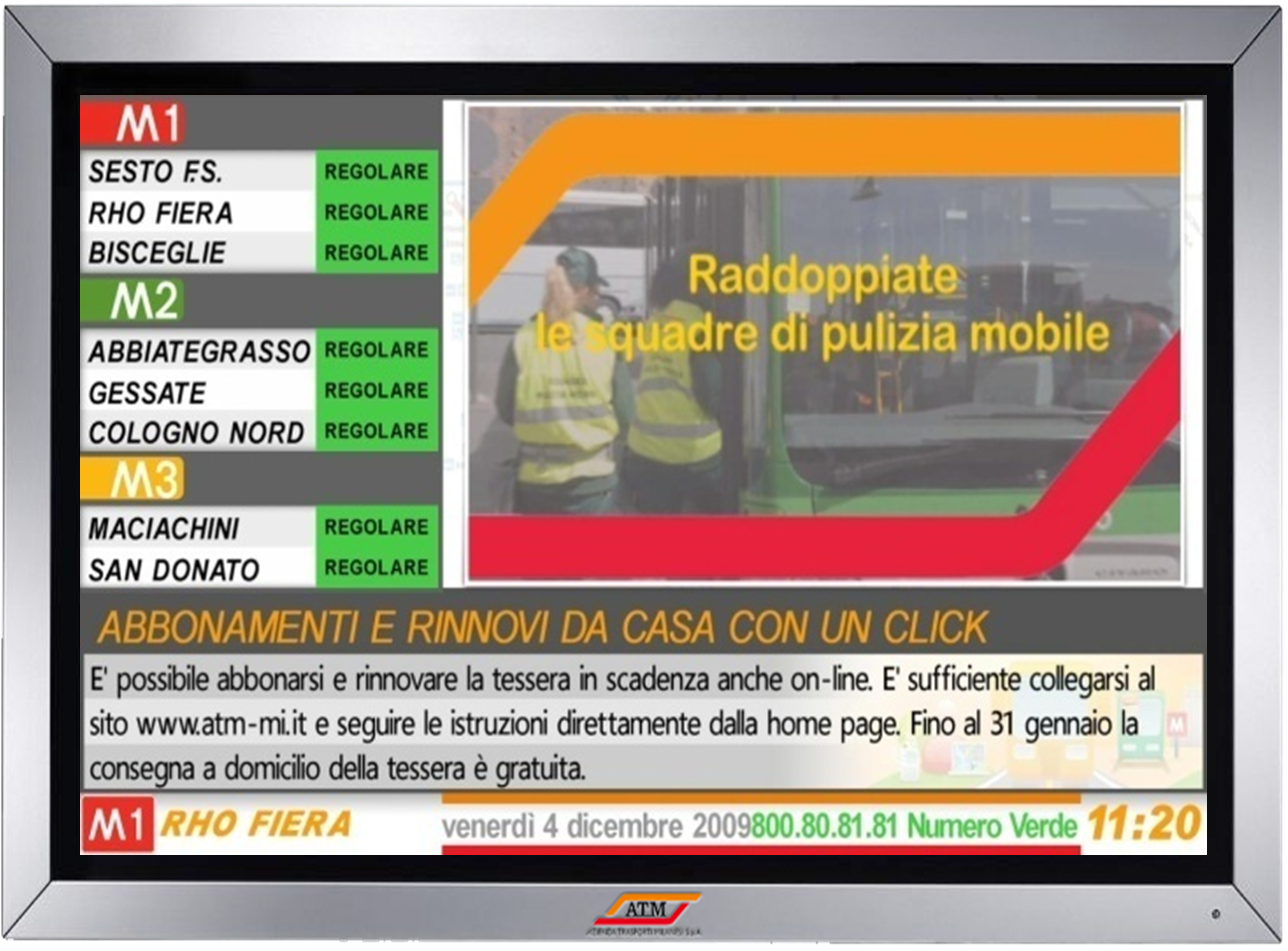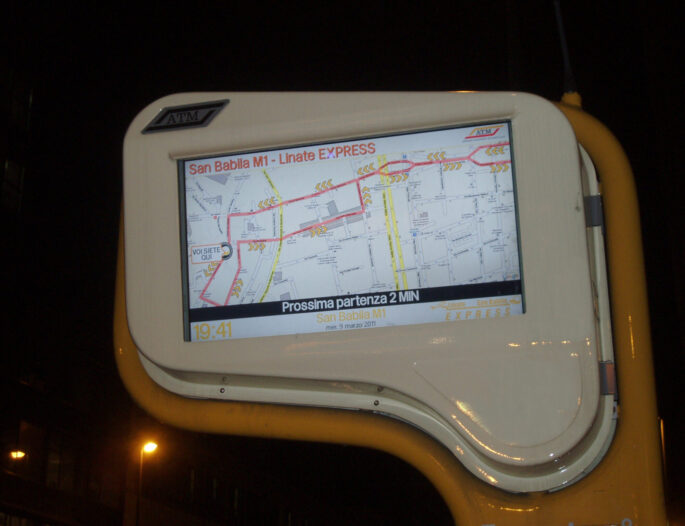ATM Milan Transport Agency
ATM identifies the digital signage as the solution to deliver all the information tasks required.
M-Cube was chosen to develop and implement the project.
In 2010, while planning the underground renovation project, ATM recognized the need to improve also the communication system. It required to communicate more effectively and efficiently with the users of the transport system and with its own staff:
• Time tables;
• “Live” delay information in case of problems on the line;
• Alternate routes;
• Safety messages in case of emergencies.
Furthermore, it needed a communication tool between ATM’s staff at the stations or vehicles and ATM’s headquarters so that immediate action could be taken in case of a problem. To create maximum manageability, the communication network would need to integrate with the existing services and hardware in order to be operated from the central control room.
It was clear to ATM that the solution would be found in a digital signage network that could live up to all the information tasks.
ATM’s IT Department decided to look for a reliable digital signage platform that could guarantee the flexibility of communication over an extensive network and a company that could manage and execute the project by integrating existing system functions (like panic alarm, “train at station signaling,” etc.) with the digital signage system.
ATM identifies Scala as the most suitable and reliable digital signage platform and M-Cube, Italy’s Scala preferred partner, was chosen to develop and implement the project. M-Cube is also to provide ongoing technical support and content management support.
- All renewed station are to be fitted with a 42-inch LCD monitors above the stations’ turnstiles. The display are used to communicate ATM corporate messages, network service updates, alternative routes and emergency messages.
- The “Don’t Panic Buttons” for the staff are connected to the turnstiles area monitors to provide default messages in case of an emergency. A push of the button will also alert the central control room, which will manage the messaging toward the stations that are affected by the situation or towards the entire network.
The new network can now communicate efficiently and in real-time to all stakeholders internally and externally improving the service to customers, managing congestion better and improving safety measures.
On top of this, the staff is no longer tied up the majority of the time informing the public verbally regarding time schedule issues. They are able to concentrate on other duties to provide better service to the travelers.



